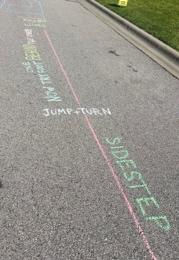Understanding Pain
- All Care Therapies

- Dec 27, 2022
- 2 min read

What is pain? How does it work? When there’s pain, does it mean there is an injury? These are questions patients, clinicians, and researchers are still trying to understand. Something on which we can all agree—pain is not fun. Research now indicates that pain does not necessarily mean there is an injury to the body; however, we know that the sensation of pain is very real.
Pain requires proper communication with the nervous system to identify and grade the intensity of pain. A good example of this is when you touch a hot surface such as a stove:
The hand goes on the hot surface;
Receptors in the skin identify the “danger;”
A message is sent up through the spinal cord to the brain;
The brain takes into account the history and background of the situation;
The brain then determines that there is “pain;” and
A message is sent back down to the muscles of the hand to pull away.
This process explains why, when you accidentally touch something that is scorching hot, you may notice there is a slight delay before you pull away. This is an example of an ideal response with the nervous system but there are also times this response can go awry.
Two examples are hyperalgesia, things that hurt now hurt even more (someone may touch an area of the body and it hurts as if it was punched), and allodynia, things that didn’t hurt before, now hurt (a hot pack that would usually be relaxing). These examples can occur when a person has what we call “chronic pain” (pain lasting longer than 6 months). There are therapeutic interventions to decrease a heightened nervous system, such as:
Massage
Exercise
Heat/ice
Environment control (dim lights and/or preferred music)
Pain education
As we have learned, we know that the brain identifies as if pain truly exists. With more understanding of pain and what is occurring with the body, the brain can respond more appropriately to the body such as “calm down, we are safe.” To help someone experiencing chronic pain there are available resources that are listed below. A person does not have to live through pain every day of his life, there are ways to take control and live a higher quality life.
Resources
App for phone: “Pathways”
App for phone: “Curable”
Apkarian AV, Baliki MN, Geha PY. Towards a theory of chronic pain. Progress in Neurobiology. 2009;87(2):81-97. doi:10.1016/j.pneurobio.2008.09.018
Wiech K, Ploner M, Tracey I. Neurocognitive aspects of Pain perception. Trends in Cognitive Sciences. 2008;12(8):306-313. doi:10.1016/j.tics.2008.05.005




Comments